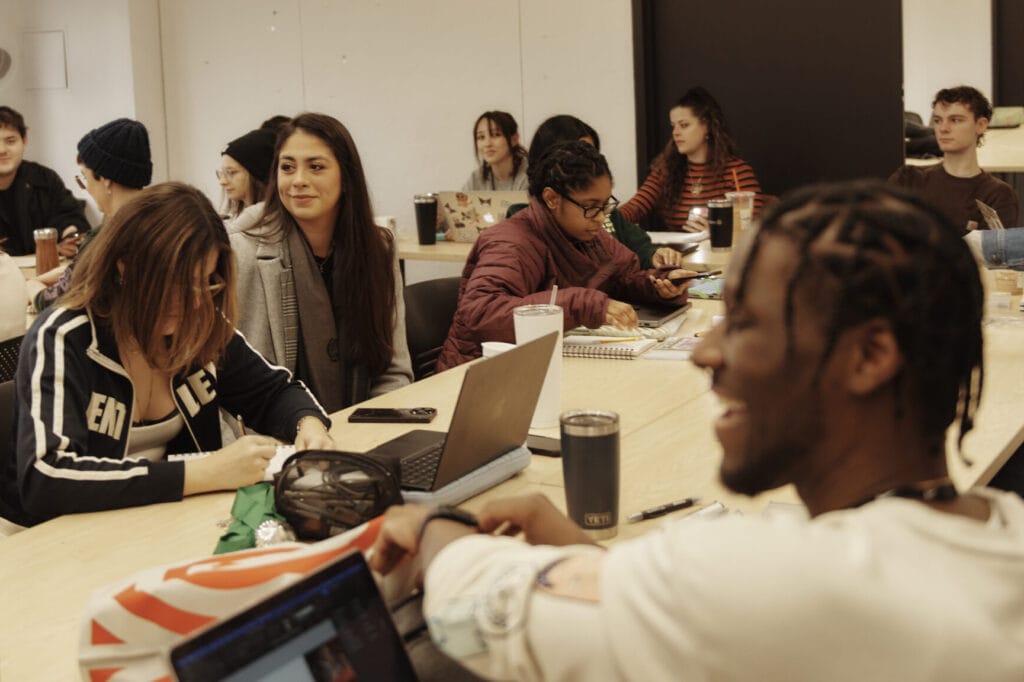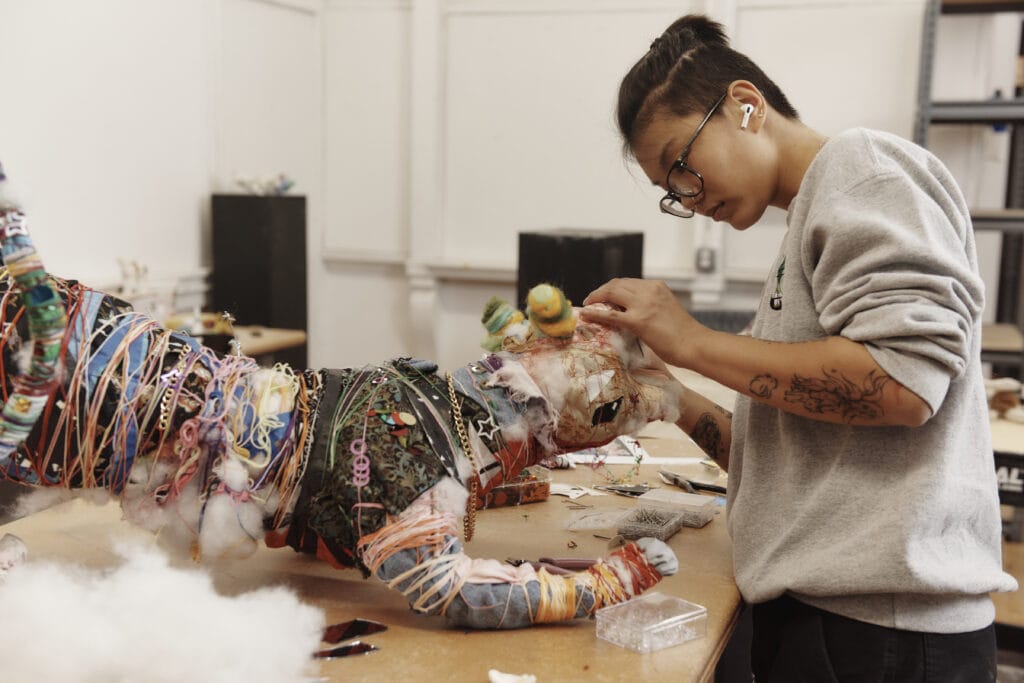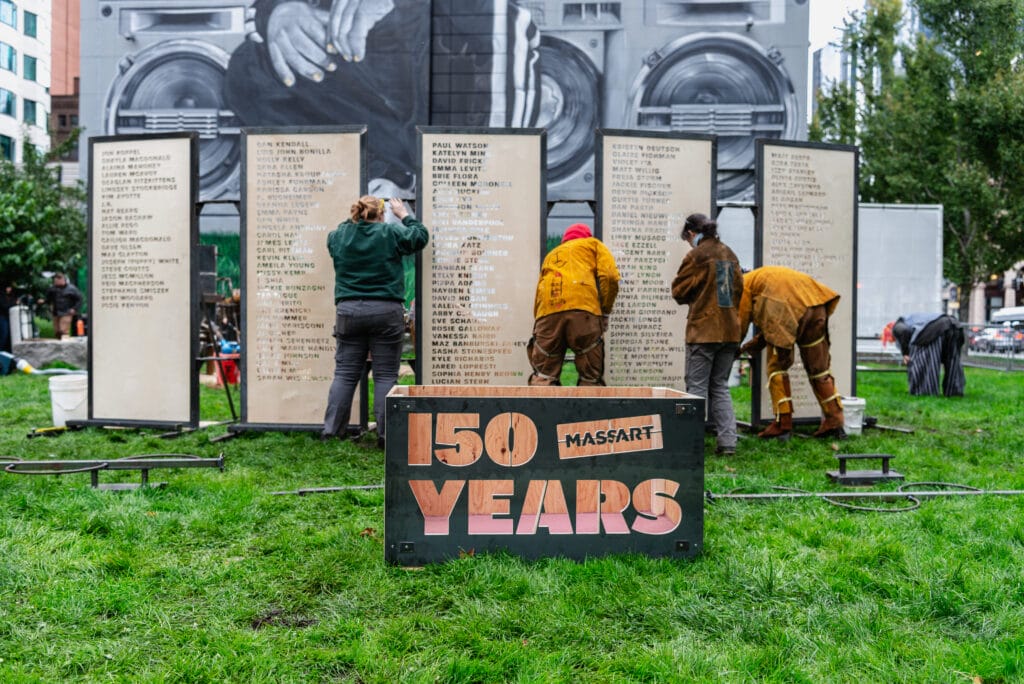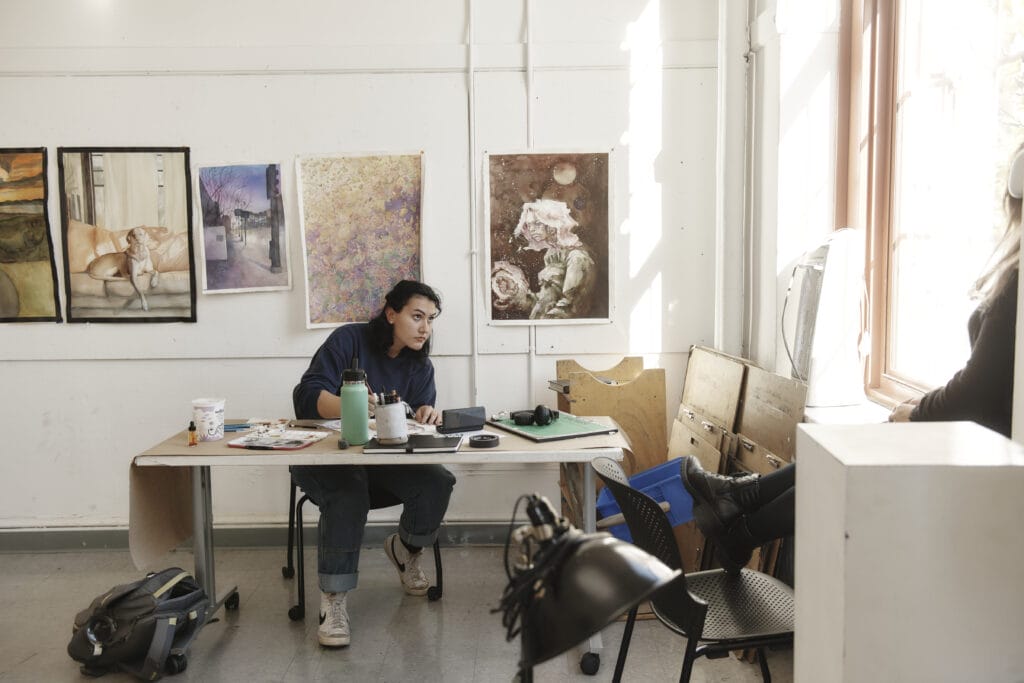Whether just beginning or expanding your skills, learn the magic of visual storytelling.
Program Start: Fall or Spring
How to Enroll: Register for a class
Program Length: 9 months (part-time)
Location: 100% Online
Total Cost: $4,800
From children’s stories to comic books, graphic novels, journalism, and more, be a part of the burgeoning comic arts scene.

Master the Art of Visual Storytelling
Turn your creativity into a career. The Visual Storytelling and Comic Arts Certificate opens doors to exciting opportunities in publishing, journalism, film, web design, advertising, video games, and beyond.
Whether you dream of illustrating children’s books, crafting compelling comic books and graphic novels, or shaping narratives for digital media, this program equips you with the skills to thrive. Your professors will be cartoonists, media scholars, and comic artists, working in a small online group setting to bring your vision to life. Sign up and bring your stories to life today.
Students may take classes at their own pace, in any order they choose. To complete the certificate in 9 months requires taking two classes in each 7-week session. Classes are non-credit.
| Session | Class Name |
|---|---|
| Fall 1: Sept – Oct | Introduction to Comics and Visual Narrative: From Panel to Comic (Required) |
| Fall 1: Sept – Oct | Introduction to Comics and Visual Narrative: Character Design and World Building (Required) |
| Fall 2: Oct – Dec | Cartooning and Narrative Illustration 1 (Required) |
| Fall 2: Oct– Dec | Non-Fiction and Memoir Comics (Required) |
| Fall 2: Oct – Dec | Short Story Comics |
| Spring 1: Jan – Mar | Cartooning and Narrative Illustration 2 (Required) |
| Spring 1: Jan – Mar | Comics and Speculative Fiction: Fantasy, Sci-Fi and Imaginative Graphic Storytelling (Elective) |
| Spring 2: Mar – May | Color and Form: Colors, Letters, Comic Systems (Elective) |
| Spring 2: Mar – May | Comics Journalism (Elective) |
| Spring 2: Mar – May | Graphic Publishing: From Comics to Video Games (Required) |
Be a part of the burgeoning comic arts scene and gain hands-on experience with industry-standard software like Adobe Illustrator, Photoshop, InDesign, and Procreate. Through this certificate, you’ll develop both technical expertise and a strong storytelling foundation, preparing you for roles such as:
Comic Book Artist or Graphic Novelist – Bring characters and worlds to life for print and digital audiences.
Storyboard Artist – Shape the visual foundation for films, TV shows, and animations.
Illustrator – Create eye-catching visuals for books, editorial content, branding, and marketing.
Concept Artist – Design characters, environments, and assets for video games, animation, and entertainment media.
Web and Digital Content Designer – Use illustrated storytelling to enhance online experiences.
Advertising and Marketing Creative – Build compelling campaigns using bold visuals and engaging narratives.
Learning Outcomes
Students who complete the Visual Storytelling and Comic Arts certificate program are expected to be able to demonstrate the following:
Concept and Message
- Produce original, finished comics, short and long form
- Understand the relationship between text and image: page design, narrative structures, and script development, along with cartooning, comic book genre and visual style
- Use research to inform non-fiction and fiction storytelling
- Appreciate historical links to comics and popular graphic storytelling
Personal Development
- Understand the creative and design process
- Build verbal and written communication skills
- Practice effective time management and professionalism
Critical Thinking
- Recognize the influence of major comics and publishing trends
- Evaluate work of self and others with a critical eye
- Understand production process from scripting, to pencils, inks and book design
Technical Competency
- Develop and understand page design, flats, spot blacks, using analog and digital tools, in both color and black & white
Industry Awareness
- Understand book festivals, comic conventions, mainstream publishing industry and fine art book market
- Acquire market understanding through genre and audience research
- Connect through internships and project collaborations
Presentation
- Create professional graphic novel proposals, short-form comics, and comic books that reflect individual style and knowledge of genre within the medium as well as reading audiences
- Understand design principles from panel to page to book design
- Produce a personal style of cartoon drawing, based on available genre and through personal exploration– created both by hand and on digitally-drawn computer programs
- Produce a body of work
- Produce short form comics/anthologies and book proposals for submission to professional publications in both traditional comic book publishing and online platforms
Costs & Application Requirements
Each class costs: $600
Total program cost: $4,800
Books and supplies: $50-$100
Application: No application required
Program Start: Fall or Spring
Choose “Workshop and Enroll in Certificate Program” when you register for any Fall or Spring Visual Storytelling and Comics Arts class to enroll in the certificate program.
Choose “Workshop and Enroll in Certificate Program” on any Comic Arts class page to both register for the class and join the certificate program.
The program is “pay as you go,” so when you register for a class, you will pay for just that one class. If you would like to pay the full tuition, that is also an option.
Unfortunately, there are no loans or scholarships available for this program.
You don’t need to follow the 9-month schedule. Take classes on your own timetable, and in any order you wish. To complete the certificate, you will simply need to complete six required classes and two electives.
Students are allowed up to one calendar year of time off during the 9-month sequence. Please contact the Program Director if you have a situation that requires you to take frequent time off.
Comics are a fluid medium. Some people choose to explore the vast range of possibilities of form and content, for which comics as a medium allows and invest time into these explorations. Others find that they can achieve wonderful results within the time they have available to them weekly. Different instructors have different requirements for their courses, but an average is 3-7 hours per week.










